Recent years have seen great advances in alternatives to animal tests. Yet we still need to understand how and why compounds are toxic before we can make the giant leap to replacement, as Emma Davies reports
‘The pressure is building. At some point we will have an explosion and things will change.’ Thomas Hartung, director of the Center for Alternatives to Animal Testing (CAAT) at Johns Hopkins University in the US is not talking about a laboratory catastrophe, but about alternatives to animal testing.
Years of research into alternatives have so far yielded only 50 validated test methods, none of which can be used as a true replacement for animal tests. The validated methods are proof that change can take place, says Hartung. ‘But these methods are actually the low-hanging fruit · the acute and topical toxicities.’ Alternative systems do not exist to test for reproductive toxicity, carcinogenicity or repeat-dose toxicity.
Now Hartung wants to see real action on a concerted testing approach, combining information from different tests, including in silico and in vitro, in an ‘intelligent’ or ‘integrated’ testing strategy (ITS). ‘People have been talking about [ITS] for 10 years, but actual progress has been very limited,’ he says.1
Livers and lungs
Human organ mimics will undoubtedly play an important role in ITSs. Although research efforts in this area focus on the liver, which deals with toxic or potentially toxic substances, a team from Cardiff University in the UK has built a model lung for chemical testing, using human lung and liver cells.
The microlung comprises six different types of lung cells and is built up like Lego, explains Kelly BéruBé, director of Cardiff’s lung and particle research group. Different cell types are layered up to mimic a lung. For example, fibroblast cells found in connective tissue create a membrane that can be topped with lung cells. Under the membrane sit blood vessel cells to represent the lung’s blood barrier. Test substances can be applied to the top of the lung system so that they work their way through the various cell systems. By adding liver cells, the team has also created a ‘metabolung’, which can metabolise test chemicals.
We can look at how different cell types react to the same chemical
Tilman Gocht
By adding biomarkers to the cells, the researchers claim to be able to monitor key toxicity events, such as the production of reactive oxygen species, in real time. Meanwhile, they can analyse metabolites using standard analytical techniques such as high performance liquid chromatograpy.
Early tests on pharmaceutical compounds suggest a good degree of correlation with animal test results. The team predicts that the lung system could be used to measure toxicity in a wide range of products, from cosmetics to pesticides, and hopes for validation from the Organisation for Economic Cooperation and Development (OECD).
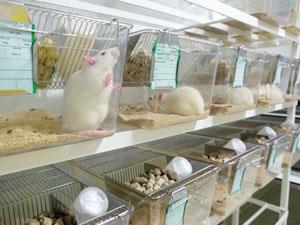
Meanwhile, 12 science teams are working together on a project to create a ‘liver-simulating device’ or hepatic microfluidic bioreactor (HeMiBio). HeMiBio is part of a wider European research project called Safety evaluation ultimately replacing animal testing (Seurat 1), jointly funded by the EU and trade association Cosmetics Europe.
In the ‘liver on a chip’, microfluidic channels connect wells, 300mm in diameter, containing different types of liver cells. The idea is that a test substance is injected at one end of the device so that it passes through the various types of liver cells. Sensors keep a close eye on cell health, measuring pH and glucose and oxygen levels. Electrodes at the opposite end measure the enzyme alanine aminotransferase (ALT), increased levels of which point to liver damage.
So far the group has developed bioreactors with nine wells but there are plans to expand to 96, says Catherine Verfaillie, director of the Interdepartmental Stem Cell Institute at the University of Leuven in Belgium, who heads HeMiBio. The team has started testing how the cells in the device behave in the presence of different compounds, but has yet to begin chemical toxicity testing.
‘HeMiBio is a very interesting project that sees cell biologists interacting with material scientists,’ says Tilman Gocht from the University of Tübingen in Germany, who works on Seurat-1’s coordination team. ‘You need to be experts in materials, flow dynamics and cell culturing,’ he says. ‘It’s exciting,’ adds Verfaillie. ‘For me as a stem cell biologist it has been quite enlightening to work with engineers to develop this.’
Designing the device itself has been a difficult task, and finding the best combination of cells to mimic the liver was also tricky. ‘You do not just need hepatocytes but also other cells to be able to fully test toxicology,’ explains Verfaillie. The team mainly uses human pluripotent stem cells, which need to be ‘educated’ to tell them which kind of organ cells to form, she explains. This is largely done using growth factors. ‘We hope that if we can get all of the right cells together then they will educate each other,’ she says.

One of the HeMiBio collaborators, a German company called Medicyte, is working on using ‘immortalised’ mature human cells for the bioreactors. In tests so far, the bioreactors have kept the cells healthy for up to three and a half weeks. The ultimate plan is to use the model livers to screen for repeated-dose toxicity of substances, to replicate what would happen with regular use of a cosmetic or pharmaceutical.
The technology could also be used to create other devices, such as one to simulate human kidneys, the researchers predict. Verfaillie would like to be able to monitor metabolites forming in the liver cells, although she doubts whether current analytical techniques are sensitive enough to measure the trace levels of chemicals produced in such a small number of cells.
A ‘beautiful way’ to advance the stem cell work would be to create so-called reporter cell lines by inserting reporter genes, says Gocht. ‘This is the way that Seurat-1 is going. We can put reporters in pluripotent stem cells which can differentiate into different organ-specific cell types. We can then do toxicity testing and look at how different organ-specific cell types react to the same chemical.’
Trans-Atlantic testing
Seurat-1 is also collaborating with two major US chemical screening programmes: Tox21 (toxicology for the 21st century) and ToxCast (toxicity forecaster). ToxCast is run by the US Environmental Protection Agency (EPA) and uses high-throughput in vitro assays to expose cells or proteins to pharmaceutical and industrial chemicals. The ToxCast results are added into Tox21, a federal agency collaboration bringing together the EPA, the National Institutes of Environmental Health Sciences (NIEHS) and the US Food and Drug Administration (FDA).
Tox21 has an overarching goal to move toxicity testing away from in vivo models to in vitro assays. It uses robotic technology to screen thousands of chemicals for potential toxicity in a bid to prioritise the thousands of chemicals that need toxicity testing.
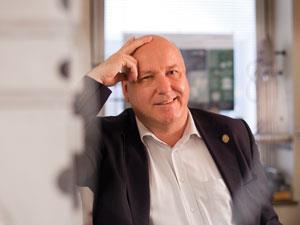
Gocht sees Seurat’s collaboration with Tox21 and ToxCast as a big advance. ‘A global strategy and interaction between large-scale projects around the world is critical,’ he adds. ‘Seurat-1 is currently defining case studies and the first question is what kind of chemicals we should test. We will aim to use chemicals that are also included in the Tox-21 programme. If they are not included, we will ask if they can be.’
CAAT’s Hartung admires the coordinated approach to alternative testing adopted by the US. ‘It’s fantastic to see how the EPA, FDA and NIEHS collaborate to develop tools. They are in the driver’s seat,’ he says.
‘In the EU, we have a completely different situation where the same amount of money is spent but it’s given to many places without proper coordination. Europe has fantastic science but no coordination,’ he adds. As a result, CAAT is lobbying for a European safety sciences institute to be established to coordinate European efforts on alternative testing. This would deal with developing new testing tools, while also focusing on how technologies can be integrated.
A global strategy between large-scale projects is critical
Tilman Gocht
Tox21 takes all available assays and produces vast quantities of data on many chemicals before trying to unearth toxicity pathways, says Gocht. Seurat-1 takes the opposite approach, he adds, using a set of well-defined chemicals and addressing specific toxicity pathways. In particular, Seurat-1 focuses on adverse outcome pathways (AOPs) for chemical toxicity, trying to find ways to monitor all of the steps that lead from a ‘molecular initiating event’ following chemical exposure to eventual organ toxicity.2
‘We are taking the knowledge coming from Tox21 in order to help figure out these AOPs. Then, based on that knowledge, we are developing integrated testing strategies to see whether the AOPs make sense,’ explains Gocht.
Sensitive issue
Perhaps the most advanced alternative testing is for assessing a chemical’s potential to cause an allergic reaction on the skin, known as skin sensitisation. The chemical steps for skin sensitisation are fairly well understood and it already benefits from an AOP, as set out by the OECD.3 This covers the steps leading to an allergic reaction, from the induction phase when allergens or their metabolites bind to proteins in the skin’s upper layer, to the subsequent immune response (see A sensitive subject).
In particular, three skin sensitisation tests have advanced through the evaluation and validation process. The EU Reference Laboratory for Alternatives to Animal Testing (EURL ECVAM), which works on validating tests, has formally assessed a direct peptide reactivity assay. Procter & Gamble developed the assay, which uses high-performance liquid chromatography to monitor a chemical’s potential to interact with a synthetic peptide.
EURL ECVAM has also published recommendations for a test called KeratinoSens, developed by fragrance company Givaudan, which monitors changes in keratinocyte skin cells following chemical exposure. Meanwhile, scientists from Japanese companies Shiseido and Kao have developed a human cell line activation test (h-CLAT). The test follows protein markers on the surface of cells resembling dendritic cells, which alert the immune system to the presence of allergens.4
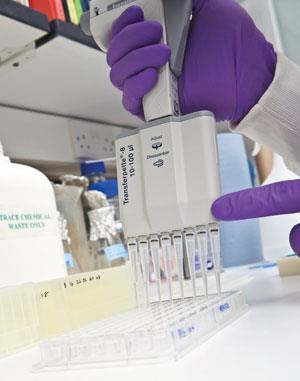
Each test focuses on a single aspect of skin sensitisation and EURL ECVAM stresses that they should be used as part of an ITS to predict whether a chemical has the potential to cause allergic reactions. EURL ECVAM is itself developing an ITS for skin sensitisation based on combinations of in silico and in vitro methods.5
Maurice Whelan, head of the systems toxicology unit at the EU’s Institute for Health and Consumer Protection and EURL ECVAM, has high hopes for future regulatory use of alternative skin sensitisation tests. ‘Suitable solutions based on integrated testing strategies may be available to satisfy information requirements under the 2018 Reach registration deadline,’ he predicts.
Yet full replacement of animal tests for skin sensitisation will require information on the potency of sensitisers, says EURL ECVAM. Collecting such information is easier said than done, since it is not yet known which events determine the potency of an allergen.
Nevertheless, scientists are pushing forward with potency predictions. ‘Right from the start we were working towards alternative approaches which allow us to assess the potency of potential skin allergens, like the LLNA [local lymph node assay on rodents] does,’ says Joanna Jaworska from P&G in Belgium. The P&G team has developed an ITS which uses a Bayesian network, a kind of graphical model that determines how all test variables depend on one another. The ITS combines in silico information and data from a set of alternative tests, including KeratinoSens and direct peptide reactivity assays.
The scientists have translated a mechanism for skin sensitisation induction into a network structure, before mapping the tests used to observe the process onto the network. In a recent trial, they reported that the ITS correctly predicted potency, based on LLNA data, for 86% of chemicals in a test set.
Setting the scene
The skin sensitisation efforts lay the groundwork for developing tests for other types of toxicity. ‘Although delivering reliable non-animal solutions to effectively evaluate skin sensitisation is a very important goal in its own right, work in this area is pioneering in relation to how understanding mode-of-action … can be used to rationally design and evaluate combinations of in vitro and in silico methods,’ says Whelan, who was a co-author on a progress report on this in 2013.6
Over the past few years, CAAT’s Hartung has noted more calls for mode-of-action mechanisms and pathways of toxicity. The future, he says, lies in using scientific knowledge to ‘go back and ask what we need to test for. At the moment, our test systems are mainly black box. Even the cell cultures that we are using are black box - we don’t really understand what is happening.’
Understanding the limitations of current test systems is also critical, says Seurat’s Gocht. ‘A big challenge is always to have an idea what in vitro systems are fit for. An in vitro test will never be able to explain an in vivo response in detail. As soon as you separate a cell from a body, it will change its signal pathway. We need to understand how we can convert the knowledge that we are gaining from in vitro systems to the in vivo situation,’ he says. ‘This is going to be a big challenge.’
Hartung is certain that change is on the horizon. ‘My strong belief is that we will have some type of revolution.’
Emma Davies is a science writer based in Bishop’s Stortford, UK
References
1 T Hartung et al, ALTEX, 2013, 30, 3 (http://rsc.li/1dvpqsN)
2 S Scholz et al, Regul. Toxicol. Pharmacol., 2013, 67, 506 (DOI: 10.1016/j.yrtph.2013.10.003)
3 The adverse outcome pathway for skin sensitisation initiated by covalent binding to proteins, OECD, 2012 http://rsc.li/KxwhuJ
4 T Ashikaga et al, ATLA, 2013 38, 275 (http://rsc.li/1cAyJu2)
5 EURL ECVAM Strategy for replacement of animal testing for skin sensitisation hazard identification and classification, EU publications office, 2013
(DOI: 10.2788/84214)
6 EURL ECVAM progress report on the development, validation and regulatory acceptance of alternative methods (2010-2013), EU publications office, 2013 (DOI: 10.2788/90736)
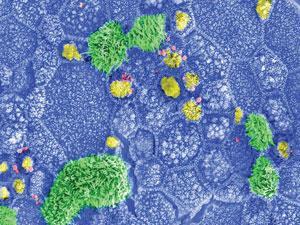
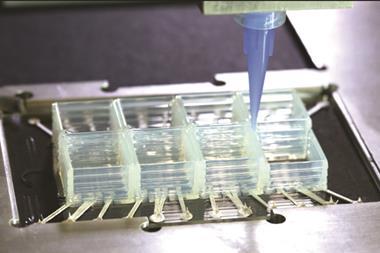











No comments yet